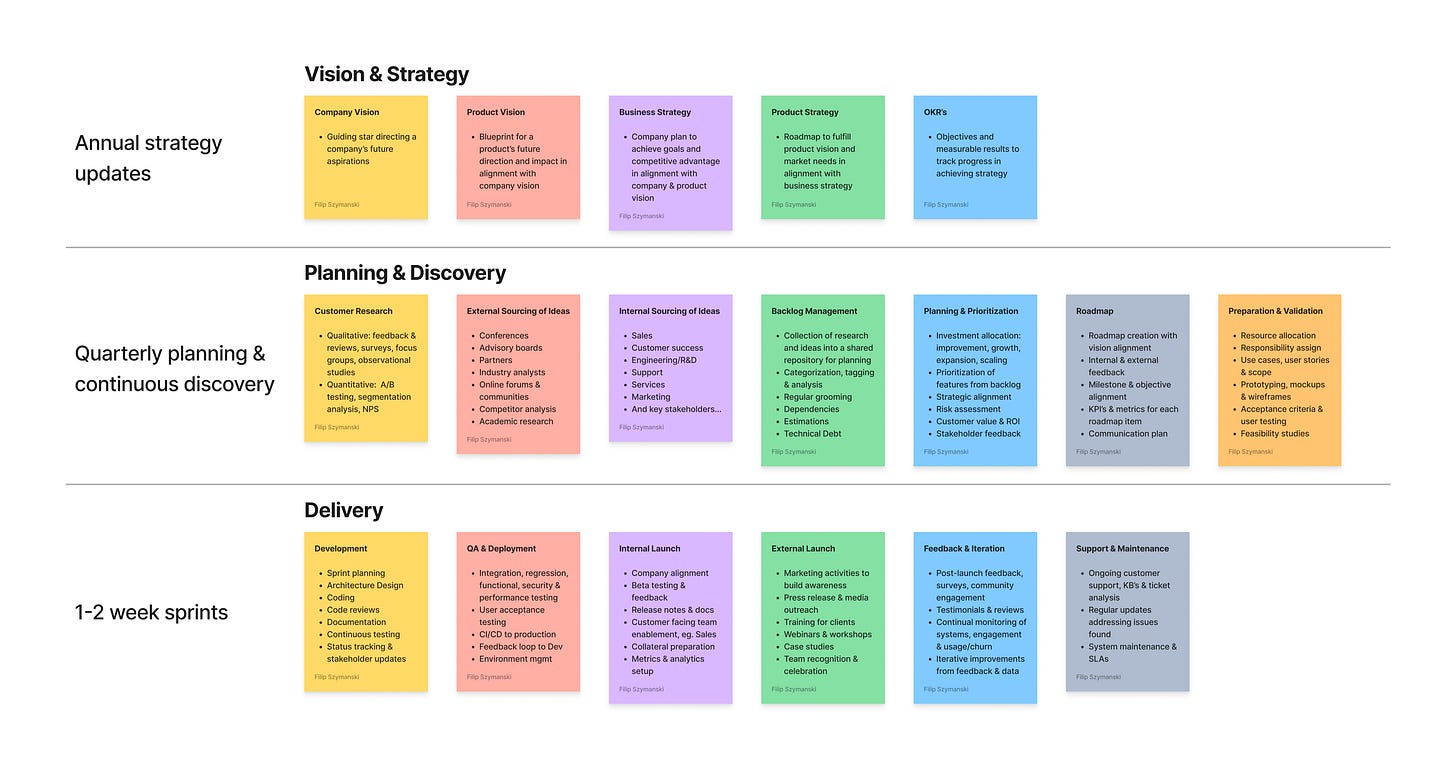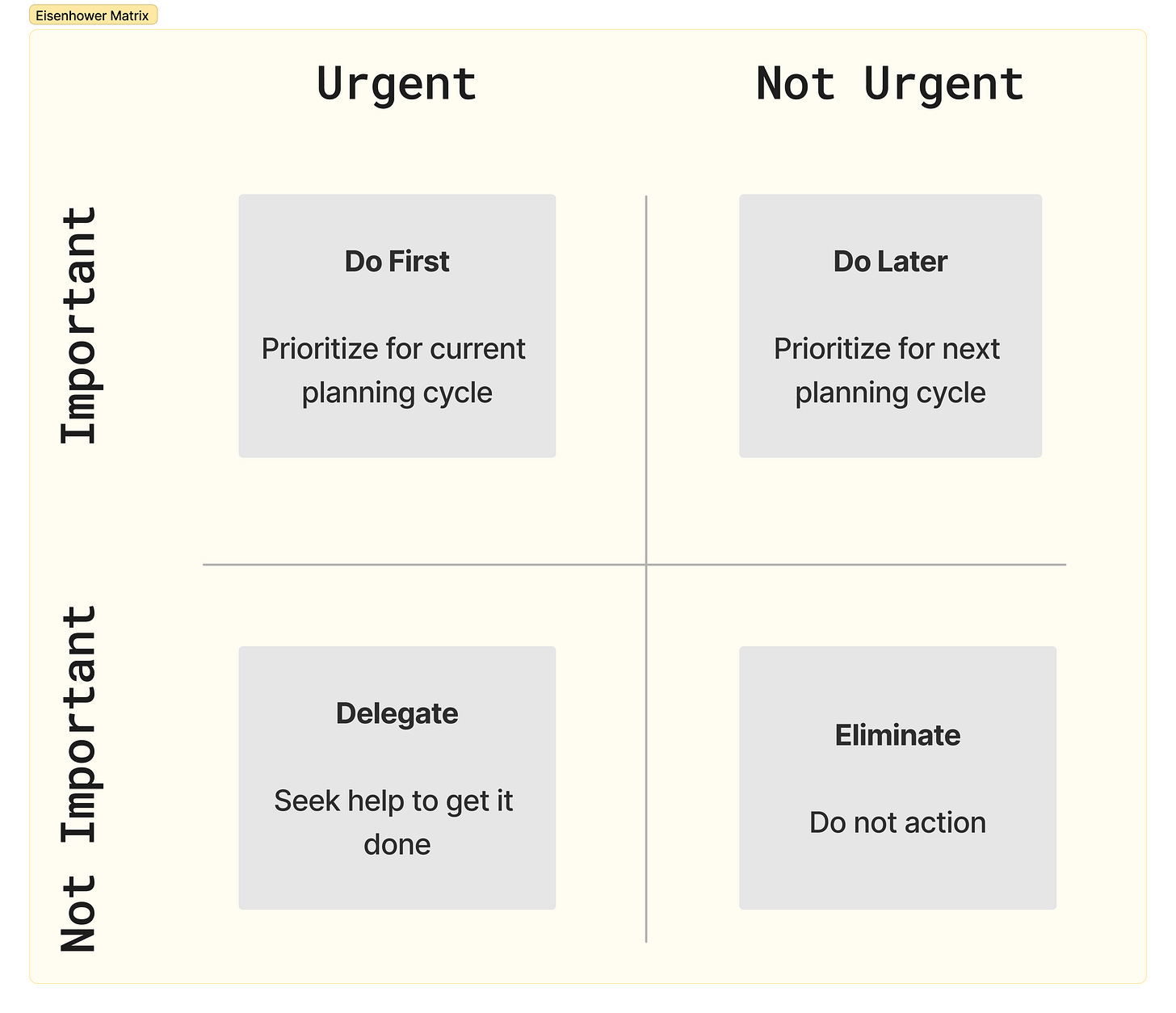Beyond the Hype: Evolving Your Product Delivery Lifecycle With AI
As a product leader for two decades, I have explored a wealth of advice from books, blogs, podcasts, and many self-proclaimed online "experts." Yes, that includes daily LinkedIn and Twitter advice and a deluge of AI "top 10" lists. Reflecting upon this vast ocean of information and my practical trials, I have discovered that much of it falls short of actionable insight due to its situational nature. In this post, I aim to guide you on framing your product delivery process and the applicability of AI within this context.
Visualize the Process
Your starting point should always be understanding your product delivery process better. Leave the AI hype aside for a moment. You will frequently discover that internet advice does not resonate because it lacks the context of your distinct circumstances and challenges. I was always the first to try new things, and disappointed so many times by the lack of promised impact.
I like to compare the product delivery process to a machine that requires regular maintenance, tuning, and enhancements. To do that, one must understand how the machine works in the first place. I use storyboarding to identify each integral step, and for each step, I aim to measure the efficacy to spotlight bottlenecks and areas for optimization. Ideally, there is process documentation for each step to ensure consistency of execution and a baseline for improvement.
To help you jump-start the visualization process, I created the framework below as a blueprint. While the specifics may differ based on your unique context (feel free to add and subtract as appropriate), it's paramount to approach your product delivery as a machine with opportunity for improvement. Scrutinize each step, revisit its processes, and discern areas that warrant modification, replacement, or removal based on feedback and the business objectives you are trying to achieve. Once the visualization is complete, you can systematically prioritize enhancements to make the desired improvements.
Prioritize What to Improve
Even a simple prioritization framework, such as the Eisenhower Matrix, will be instrumental in helping you to identify the top priorities. As a refresher, the Eisenhower Matrix divides tasks into four categories based on urgency and importance (see diagram below). By categorizing tasks in this manner, you can determine the most effective order to address the improvements to your process, focusing first on the urgent and important tasks and eliminating or delegating less critical ones. Pro tip: the first task may very well be documenting the process for each step to understand the work and to create consistency of execution. You will have difficulty improving each step if performed differently each time.
Get Everyone's Buy-in
I must acknowledge that management will likely have preconceived notions about what is not working. They might suggest that releases aren't frequent enough, protracted, or lack customer-centricity. Yet, these beliefs often stem from personal observations or second-hand accounts—mostly subjective opinions lacking empirical backing. Given this, my advice is to visualize and equip your steps with measurable metrics if you haven't already. Metrics will help you replace subjective opinions with tangible data and offer a means to track improvement progress and demonstrate actual results.
A word of caution: don't get sidetracked by the allure of the "next great idea" proclaimed by social media. Instead, harness your focus from the beginning in alignment with your improvement objectives. While there's a chance you might stumble upon a perfect solution tailored to your context, preemptive focus ensures your team isn't overwhelmed with a barrage of new ideas that may not work. Once you have prioritized what needs to get done, you will do your usual research to find the optimal solution, and at that point, exploring suggestions with a focus on the problem will make sense.
To ensure buy-in, collaborate with your peers and management. Share your discoveries, prioritize jointly, and systematically execute improvements to refine the product delivery steps. Too often, I have found great proposals shot down because they lacked broader buy-in. Socialization may not be your favorite activity if you have a predisposition to get things done. Still, the reality is that what you view as most important may not be aligned with the greater organization or company goals. The buy-in will ensure everyone will care about the priorities and therefore support you in making changes, which frequently will depend on your colleagues.
Leveraging AI
The methodologies for implementing or refining the product delivery steps have undergone a paradigm shift in recent years. The dawn of AI has ushered in an era where processes are faster, more impactful, and less labor-intensive. AI-based product features also necessitate changing the development processes to seamlessly integrate machine learning functionality into the end product.
Before providing AI-specific improvement examples (that you may pick from *after* you have prioritized what needs to get done), let me touch upon ChatGPT or LLMs in general. AI chatbots are a game changer for individual productivity. I use ChatGPT daily, and I believe it would be unwise to ignore this technology while creating and delivering roadmaps. Here are specific examples of how I utilize ChatGPT:
Process improvement. ChatGPT will vet a process and suggest edits, frequently enhancing the process with sensible steps culled from hundreds, if not thousands, of books and articles on the subject. There is no way you will be as thorough, even if you bring everyone on the team into the room, though it should always be a +1 and not a replacement for your colleagues – they will quickly dismiss your excellent processes if they are not bought into them.
Frameworks. ChatGPT will enhance and even create frameworks that represent industry best practices. Do you need a better user story template? A persona document example? A strategy blueprint? Even feed your existing documents into ChatGPT, which will suggest logical improvements. Add context and objective, and ChatGPT will produce an even better response. Agree on the documents you create with ChatGPT and make them a standard part of the process.
Summarization and discovery. ChatGPT with Advanced Data Analysis can take in documents, articles, meeting notes, discussions, blogs, etc. Let ChatGPT extract the essence of these documents, create summaries, and propose agendas. You can even have a conversation with ChatGPT about the content you have uploaded, cutting down the time it takes you to understand the information.
Note: you may have to talk with your employer about uploading data to ChatGPT. Check first and advocate for the Enterprise version that respects the privacy of data uploaded to the system.
Below, I propose improvements to your processes, including more effective product delivery steps and required activities to build AI-enabled products. As noted earlier, prioritization comes first. Only pursue these after you have prioritized what is important next.
Product Delivery Lifecycle Enhanced by AI:
Customer Research:
Feedback Analysis: AI can assist in sentiment analysis, transcribing, and categorizing customer interviews or focus group responses.
Predictive Insights: Use AI to anticipate customer needs based on historical interactions.
External Sourcing of Ideas:
Trend Analysis: AI can help analyze vast amounts of customer feedback from various sources to spot product issues and opportunities.
Social Media Sentiment Mining: Extract and analyze public opinion on related topics/products from social platforms.
Internal Sourcing of Ideas:
Data-driven Decisions: Use internal data to fuel ML models, aiding in decision-making based on user behavior, feature usage, etc.
Collaborative Filtering: Suggesting new product ideas or improvements by analyzing similarities in feedback or requests from different departments or teams.
Feedback & Iteration:
Feedback Analysis: Break down free-text feedback into actionable insights.
Predictive Churn Analysis: Identify which users might abandon the product based on interactions with new features.
Product Delivery Lifecycle With AI Feature Development:
Preparation & Validation:
Prototyping: For AI features, prototyping might involve creating initial models or algorithms and validating their accuracy.
Data Considerations: It’s essential to detect and alert for potential biases in training data.
Delivery:
Development: AI/ML model development, training, and validation become core tasks.
QA & Deployment: Testing for AI-driven features involves ensuring model accuracy, fairness, and bias checks.
Internal & External Launch:
Training: Specialized training sessions might be required to help users understand AI-driven features.
Accuracy: Gather feedback specifically on AI functionalities to understand if predictions or suggestions align with user expectations.
Feedback & Iteration:
Continual Monitoring: For AI features, monitoring also includes checking the model's production accuracy and performance over time.
Iterative Improvements: This might involve retraining models with new data or tweaking algorithms based on feedback.
Support & Maintenance:
Ongoing Support: Addressing queries or concerns related to AI-driven features. For example, why a specific prediction was made.
Model Maintenance: Regularly update, retrain, and test ML models to maintain or improve accuracy.
Conclusion
By visualizing, measuring, and continuously refining your product delivery processes and embracing AI's transformative capabilities, you set your team and product up for success in this dynamic digital era. Despite the deluge of advice available, it's vital to filter this information through the lens of your unique business approach and priorities. Stay focused, and make sure your enhancements are rooted in actionable insights with real-world relevance.





